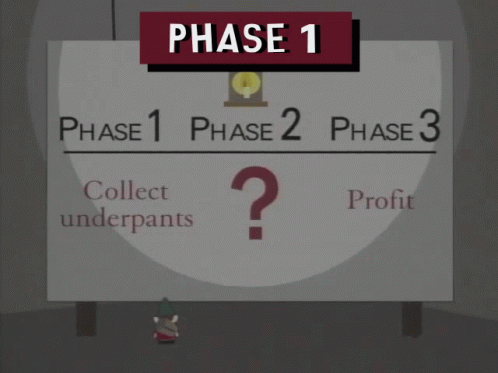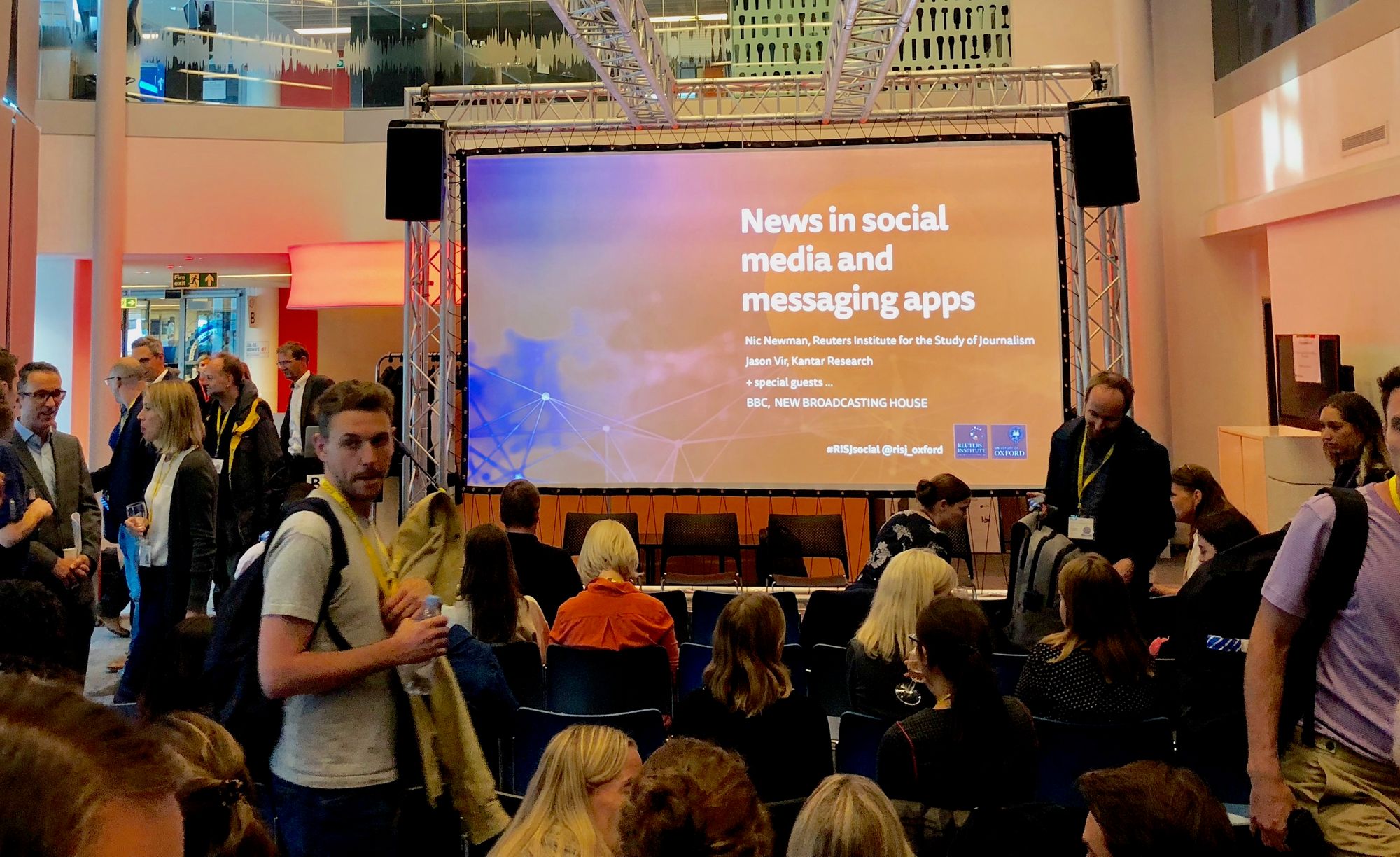
Avoiding the TikTok trap
TikTok is both a necessity to reaching younger audiences, and a platform we should be incredibly wary of. How do we reconcile these two facts?
There’s an interesting piece on MX3HQ today, profiling the work of Erika Marzano and the Deutsche Welle audience team on TikTok. It’s good and full of useful and practical advice, as you would expect based on Erika’s smarts and experience. I throughly recommend it. (She’s a member here. Hey, Erika!)
But there was one passage that’s been haunting me since I read it. It’s stuck deep in my mind because it glosses over something we should all be deeply worried about. And this is the passage:
They wanted to reach audiences as young as 14 years old, explains Erika, and soon realised that to achieve this, TikTok would not be a nicety, but a necessity. Where most of their young potential audiences were on TikTok, among other platforms, some of the younger generations, such as Gen Z, were exclusively active on TikTok.
This is an abjectly terrifying statement that is casually thrown into the article. Just think about it. This specific part of it is what worries me:
soon realised that to achieve this TikTok would not be a nicety, but a necessity
(Emphasis mine)
First up: I think that statement is correct. But let’s think about the consequences of it. We cannot reach a significant subset of teenage audiences without doing TikTok. We cannot reach our next wave of readers, listeners and viewers, without being compelled to a single social platform, which is, in effect, under the control of an often antagonistic power.
This is a problem.
TikTok is a trap
And we should know better than to fall into that trap now. We’ve been burnt by it before, (yes, looking at you, Facebook) but somehow this thinking persists. It’s a legacy of the past decade of deplorable decision-making, and we need to move beyond it. We spent the 2010s building indirect relationships with readers, through social platforms and search. That was the easy bit. What most publications failed to do was the hard bit: taking those mediated relationships and making them direct relationships.
Those who listed to the advice to build relationships via platforms and then make them direct ones are far less exposed to the rapid decline in social traffic. Those that didn’t were left critically wounded when Facebook pulled through rug from under news traffic. And they’re probably looking at the coming changes to search with mortal dread.
Now, to be clear, I still think we should be on TikTok. I have many, many slides I use in my lecturing, training, and consulting work to that effect. Do TikTok by all means, if it makes sense for your businesses. But just being on the platform isn’t enough. It never was. You need to build at least three parallel streams of work.
Your TikTok survival guide
So, here’s the three things you should be doing as well as making some funky videos…

1. Your TikTok funnel
Don’t just make good news videos, count the views and feel smug. Do this as well:
- Build things on your site that young people will actually want to interact with
- Use TikTok to let them know about it
Sure, you can just brand build. Let youngsters get familiar with your brand via TikTok, and hope that that will magically transform into a relationship somewhere down the line. It’s all a bit underpants gnomes, isn’t it?

But, what if it doesn’t work? What if the platform audience never translates into a direct audience? You’ve just spent a lot of time and money helping build the TikTok platform, without any manifest benefit to your business.
Yeah, let’s not do that.
Instead, build some sort of conversion funnel that you can track. What sort of ideas are effective in generating core relationship building activities? Can you turn TikTok viewers into podcast or newsletter subscribers? Can you build an attribution model that proves that?
(I’d bet more on podcasts than newsletters. Young people don’t get serious until email until they enter the workplace. Hell, maybe even broadcast groups on messaging apps would be a better call.)
2. Your TikTok alternative
It’s very depressing that the collective industry response to young people disengaging from news is a collective shrug, and the inevitable turn to a platform to save the day. The surprising success of some forms of news on TikTok — and even of podcasts among young people — suggest that it’s less news that’s the problem, but the formats and storytelling forms we use.
We’re now dealing with generations who are not just digitally native, but essentially mobile native, too. Today’s 16-year-olds were born the year the iPhone was released. No wonder they’re uninterested in the digital replications of print forms that we evolved for big screens. It’s like shoving a 1970s black and white newspaper into the hands of a 90s kid used to colour — just much more dramatic.
(If you’re a Brit, and remember Today newspaper and its revolutionary colour printing, I’m afraid you’re old, like me.)
Digital journalism is in a constant state of reinvention, and figuring out the formats that work for young people is critical to our future. TikTok (and other vertical video platforms, as we’ll see in a minute) are primarily where people go for entertainment, and they get some news by accident.
If we find the right formats, can we get them to come to us for news, and TikTok for entertainment? I’d put a hefty bet on the fact we could. And this is where I’d start:
- Explainers
- Solutions journalism
- Truly multimedia content
- Journalist-led
That sounds like a list of topics I should come back to…
3. Your TikTok aftermath
The other thing we have to consider is the politics around TikTok. Its parent company ByteDance is Chinese and thus subject to the directions of that government. And it’s a government that has shown rich and deep affection for exploiting soft power for geopolitical gain.
That’s why governments are banning it from government-owned devices. And it’s one of the reasons why India banned it years ago. Nepal has just followed suit. Given current diplomatic tensions, this remains a worry. The number of countries banning it is more likely to expand than contract.
It’s also worth noting that any service that attracts the young may not hold them. The teenagers of nearly 20 years ago used Bebo and MySpace. You don’t hear much strategy for them these days, even though one of them still exists… A decade ago, Facebook was still popular among teens. No more.
Indeed, the dominance of TikTok varies dramatically by country. In some places and demographics, Instagram still has a bigger share of the teenager and early 20s market.
Reaching young people requires an agile strategy, not a fixed one.
You want a vertical video team, not a TikTok one

These issues, especially the potential for more bans, are, at least, directly addressed in the article:
“My answer is simple: if TikTok per se disappears, then it’s not a big deal because the TikTok way of storytelling will remain, and that is what we have learned, and we are improving every day in this. Wherever TikTok as a platform itself ends up, doesn’t really matter because this way of storytelling will stay on other platforms, the existing ones like Reels, YouTube Shorts, even Twitter X is focused on vertical content.”
This is a critical insight from Erika. You are not building a TikTok team. You are building a vertical video team, that can do TikTok. You are a learning a format that can be applied to many platforms — including your own! — not learning to serve a social platform that really doesn’t care about you.
- If you’re working on TikTok now, start thinking about how else those skills can be applied.
- If you have a “TikTok team”, ask them right now what their strategy is for bringing those skills to bear elsewhere. And if they don’t have an answer — suggest they get one. And fast.
TikTok is only part of a youth engagement strategy. It should not — but not, in fact — be the end of it. It’s got a part to play, for sure. But let’s not repeat the mistakes we made with Facebook and the last generation of social platforms.
Sign up for e-mail updates
Join the newsletter to receive the latest posts in your inbox.










#newsrw - Social Media Optimisation Paid Members Public
Liveblog of a panel debate about social media from news:rewired in February 2012